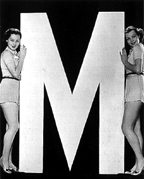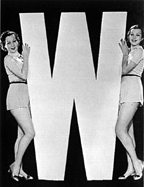Roadside
America:
A
Utopian Vision of an America Long Gone
by Mike
Walsh
Published in the Philadelphia City Paper in 1993.
Enter comments about this article below
This beloved attraction closed in March 2020 due to the pandemic and was permanently shuttered by the end of the year. In January 2021, hundreds of Gieringer's miniatures, displays, and signs were auctioned off, including the waving Amish couple statues.
"Be prepared to see more than you expect," the sign on the front of Roadside America warned. We didn't know what to expect. Our map had identified Roadside America, which is about 15 miles north of Reading, as a "point of interest," but that was all we knew.
The front section of the building contained a large gift shop. In the back of the shop an elderly woman sat in a booth in front of a dark, aging curtain. Evidently, Roadside America, whatever it was, was behind the curtain. To the side was a picture of the attraction's creator, Laurence Gieringer, and several signs proclaiming his creation's greatness. We each anted up the $3.75 entrance fee and stepped inside.
What we encountered was indeed more than we'd expected. We spent the next 45 minutes in a state of amazement at the colorful, nostalgic, miniature wonderland before us.
The Guiness Book of World Records called Roadside America, "the world's largest miniature village," but besides the small scale there's nothing miniature about it. The exhibit takes up over 8,000 square feet, filling an area the size of a small gymnasium. It's probably one of the world's largest model train installations as well, but the trains are just a small part of it. The heart and soul of Roadside America are the thousands of hand-made model buildings-homes, stores, churches, stables, cabins, factories, barns, mills, gas stations, movie theaters, and more. All are architecturally accurate replicas of small town and rural buildings dating back 200 years.
Roadside America also has meticulously detailed railroad yards, farms, orchards, public parks with monuments, a baseball field, a coal mine, and a zoo. It even has American Indian and caveman scenes, approximately 100 hand-made horse-drawn carriages, and numerous metal bridges. The attraction has little people too, over 4,000 of them.
What makes Roadside America so much fun is that it doesn't just sit there. It's a wonderland of Rube Goldberg-esque movement. Gieringer ingeniously rigged moving waterfalls, creeks, fountains, trains, trollies, cars, and figures. A helicopter and plane fly in circles a few feet above the towns. An old-time grist mill grinds away. The citizens work, walk, and play baseball. The movement is controlled by almost 2,000 transformers, switches, pumps, and motors as well as miles of wiring beneath the display. Six thousand gallons of water are pumped through its waterways every hour. All of this activity is accompanied by sound effects from hidden speakers.
The exhibit is set up for self-guided tours. You walk along a railing that circles the main platform. Every few feet, you find a number indicating the set of buildings or scene in front of you, which is explained in the brochure.
I didn't care much about the architectural or historical correctness. With all the model houses and trains, I couldn't help but think of Christmas morning and toys. In fact, with the buttons on the railing that let you control much of the action in the display, Roadside America is like a big toy. I pressed every one of the buttons. I was literally giddy that we had found, almost be accident, such an amazing place.
Every half-hour the visitor to Roadside America is treated to Night Pageant. The proprietors slowly turn down the lighting. The sun sets on the western wall in colors of orange and red. The lights inside the model buildings come up. The stars, represented by thousands of lights in the dark blue ceiling, sparkle. A dramatic spotlight focuses on a mural of the Statue of Liberty, the lights in her crown shining proudly.
The atmosphere, which had been friendly and casual, becomes hushed and reverent. "The Star Spangled Banner" and "God Bless America" are played through raspy speakers as the spotlight alternates between a picture of Jesus and Old Glory. If I hadn't been so awestruck by the volume of work and dedication it represented, the obsessive attention to detail, and the ingeniousness of it, I would've laughed out loud. Instead, I just smiled. It was a transcendant moment.
Roadside America has a shrine-like atmosphere, and the memory of Laurence Gieringer is treated with reverence. He is worshipped with plaques, pictures, and loving dedications throughout the installation and the brochures, which is understandable when you realize he dedicated 60 years of ceaseless, tireless labor to it.
Born in 1895, Laurence Gieringer started constructing model buildings from raw materials like wood, mica, and metal as a youngster. It was his boyhood dream to build a miniature town like the city of Reading. He continued with his hobby into adulthood, enhancing his skills as the years went by. According to the Gieringer legend, he worked during the day as a laborer but put all of his spare time, money, and energy into his treasured miniature buildings.
Gieringer married his childhood sweetheart, Dora. She too was enthusiastic about the project and helped with the work. Dora is credited with making the 10,000 or so hand-made trees in the current installation. Their two children were put to work painting the models.
By the '30s, word had spread through the Pennsylvania Dutch country of Gieringer's creation. In 1938, a 1,500 square foot exhibit of his work was set up in a nearby town, and newspapers, magazines, and newsreels from around the country hailed Gieringer's work as the "World's Greatest Miniature Village." The publicity fueled Gieringer's creativity, and the miniature village continued to grow and expand. Through the years, it was moved to several different exhibit halls, finally settling in its current location in the '50s.
Roadside America may not be great art, but I was fascinated that someone would dedicate their life to what was essentially an enormous model and train layout, which might make Gieringer the ultimate nerd but he's a fascinating nerd. With a determined, individualistic, do-it-yourself mentality, Gieringer forged something truly unique.
Roadside America is Gieringer's utopian vision of American life back in the good old days, when everyone worked hard and honored God and country. He knew the American Dream wasn't playing out perfectly in the world around him, especially during the depression years, so he simply decided to create it. Consequently, you'll see no signs of unemployment, poverty, crime, or pollution in Roadside America. It's an idealized vision with an otherworldly feel--a temporary refuge from the angst-ridden, alienated, violent, harried, information-overloaded, '90s urban experience. Roadside America was Gieringer's escape, and now it can be yours. It's is one of the strangest and most beautiful folk art wonders in this area.
Laurence and Dora Gieringer have long since passed away. Roadside America is currently operated and maintained by Gieringer's daughter, Alberta, and her family. Go see it if you get a chance. Just be prepared to see more than you expect.
(Roadside America was located in the heart of Pennsylvania Dutch country on Route 78/22 in Shartlesville, PA. It is now closed.)
Back to: [top] [MouthWash] [missionCREEP]
 outh
outh ash
ash